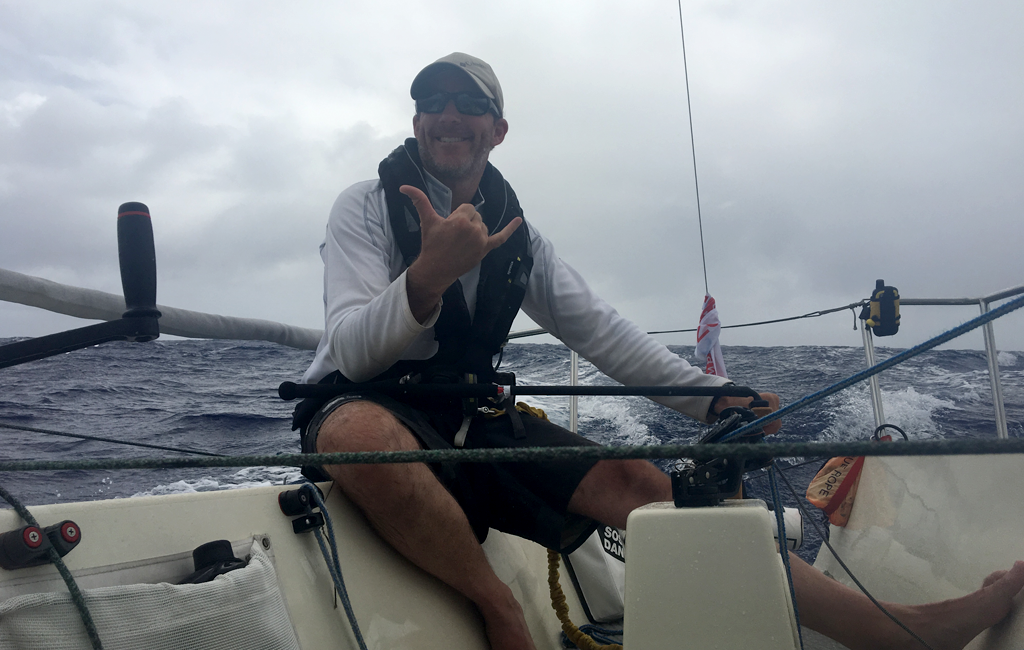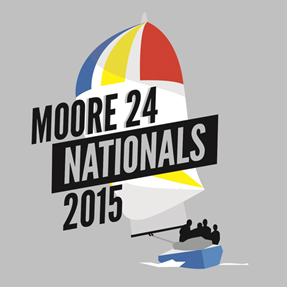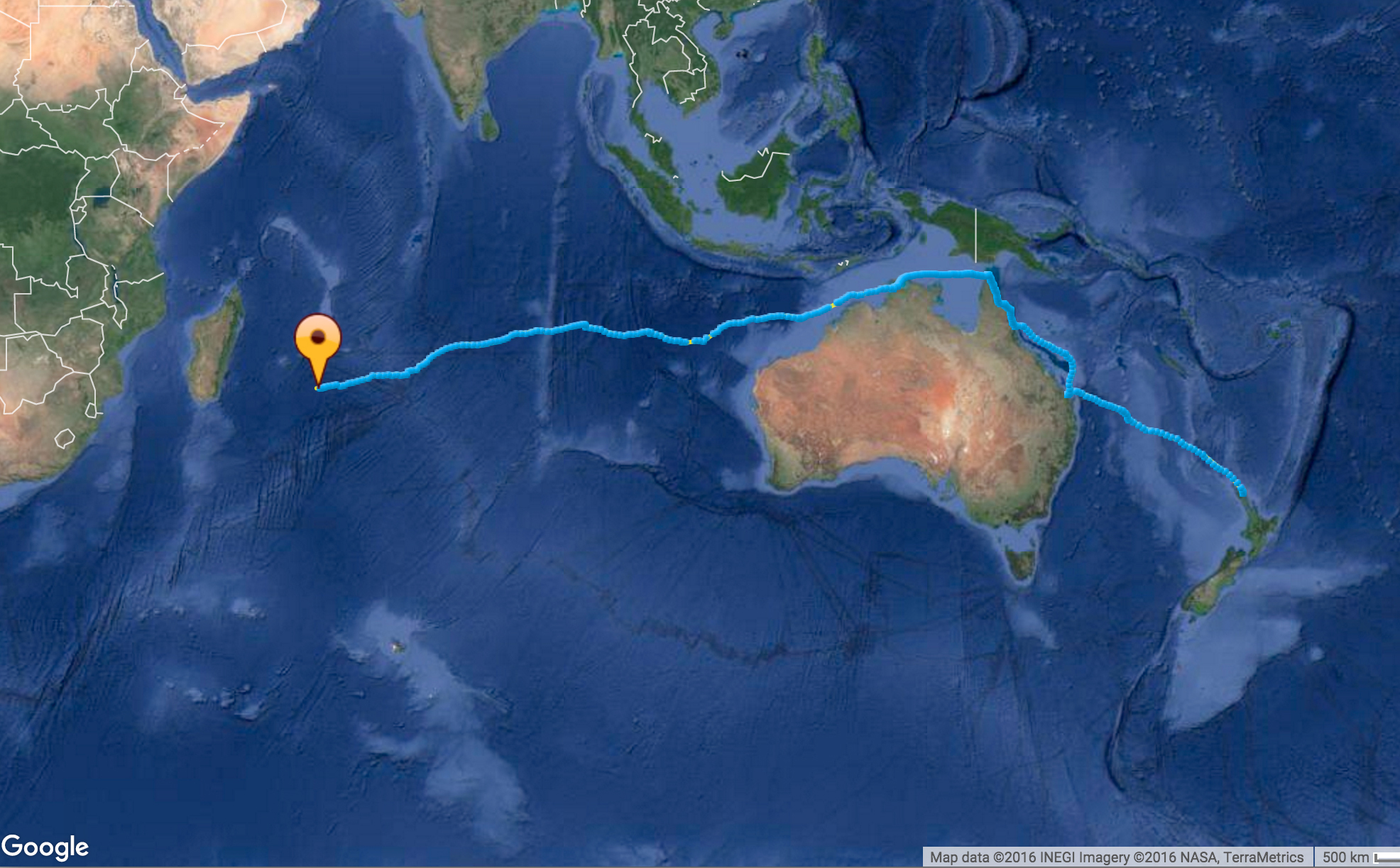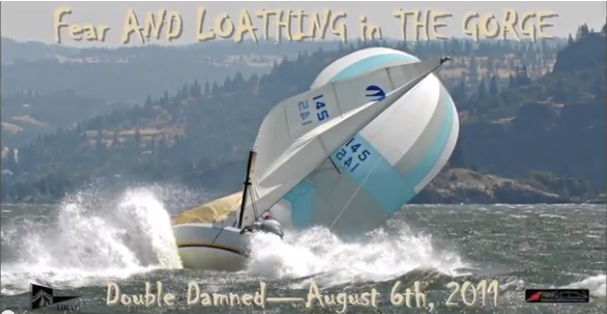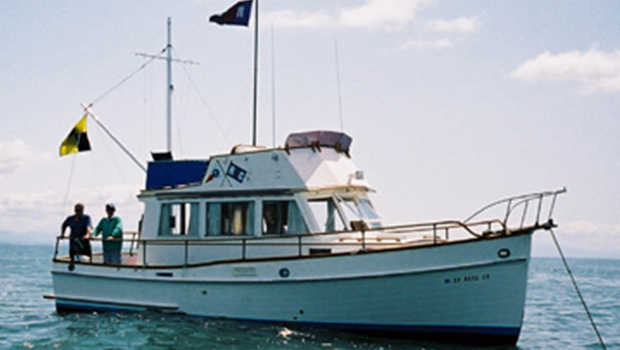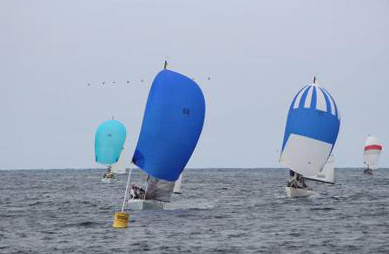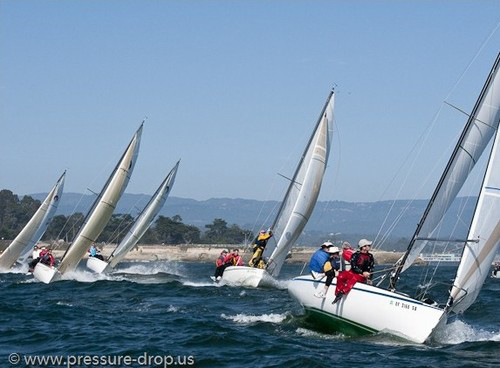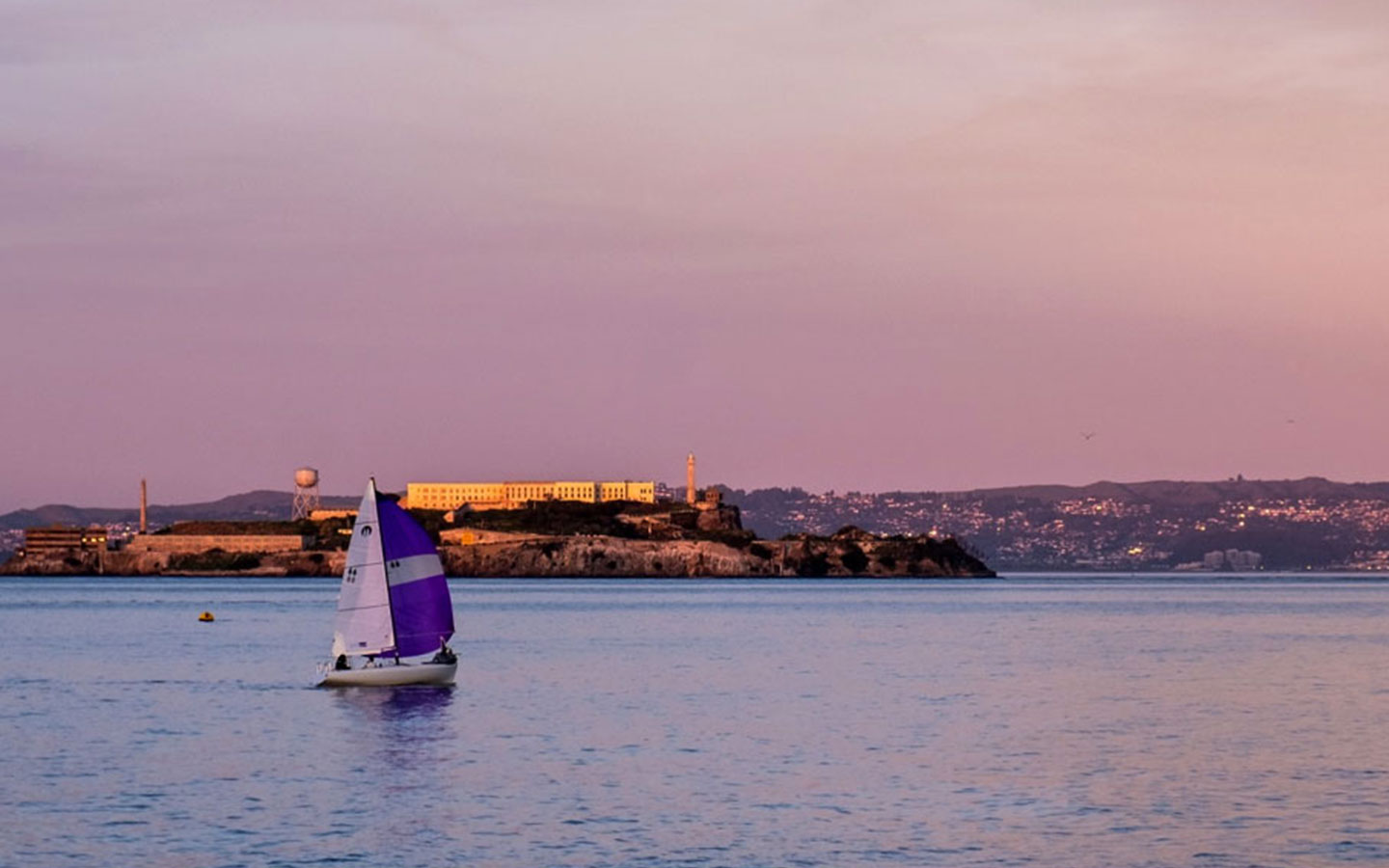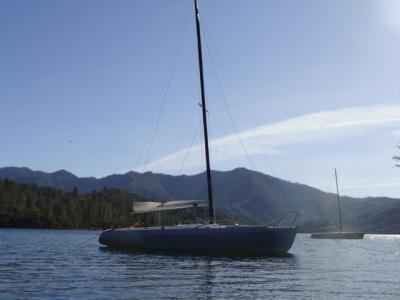Early in Summer 2016 Ian started running 'what if we started the Pac Cup
today' scenarios through Expedition, and, at one point, based on the
standard Moore 24 polars and the 2 week forecasted weather, Expedition
proudly produced a 9 day run from San Francisco to Kaneohe, HI. Because our
start was still 30+ days away I didn't pay a whole lot of attention to the
forecast, but, it did prompt me to think about what sort of condition we and
Mas! might be in when reaching Hawaii if we actually found ourselves in a
weather pattern which could produce a 9-10 day run to Hawaii on a Moore 24,
and after a quick shudder, my answer was the boat would probably have scorch
marks along the hull, smoke trailing out of her transom, and we would need
surgery to close up our adrenaline glands. Check, check and check.
Mas'! race to Hawaii started in earnest in Fall 2014. First order of
business was to redo a deck that had had so many holes drilled in it that it
looked like someone had stood over with a Tommy Gun and emptied an entire
clip into it. That project quickly evolved in an open transom modification
and a complete redo of the deck layout and rigging system. By the time the
smoke had cleared Mas! sported 4 winches, an exterior floating lead system,
an open transom, internal companionway hatch, glassed in toe rails, and a
hundred other small tweaks. Mas'! home away from home was initially Gilles'
shop at the Sugar Dock, and later Scott Easom's shop at Brickyard Cove.
Both provided advice, tools, beer, coffee and encouragement to keep at it at
3am when the temptation to 'f*ck it' became too much. Both also stepped up
at critical points with big help to keep us on schedule, and had a 'whatever
it takes' approach which directly contributed to our race - they can't be
thanked or credited enough. Mas! was the first boat in the 2016 Pac Cup
fleet to pass its safety inspection, and all that hard prep work paid off
when Dick Horn measured the boat and she weighed in at 2087lbs fully loaded
in our offshore set up (life lines, batteries, solar, instruments, outboard
etc). The plan was to surf early and longer than anyone else.
We also had in the back of our minds that the standing fastest passage to
Hawaii by a Moore 24 was roughly 11 days 9 hrs by Low Profile in 1998. I
had seen first-hand the aftermath of guys who sailed Kangaroo Court to
Hawaii in 1996 in 11 days 16 hours (John Siegel was exactly right, straight
to the hospital to be unplugged), so as the weather started to firm up for
2016 we figured if we played the cards right and the hurricanes forming off
the Mexican Coast cooperated, we would have a fast trip. First order of
business on July 11 was to start, which we did a fashionably 26 seconds
late, albeit exactly where we wanted to be to capture the lift as we got to
the South Tower. After a bunch of farting around in fickle winds outside
the Gate, we found the synoptic breeze about 4 miles past Pt Bonita and were
off.
Our semi-secret weapon going into the race were two asymmetric spinnakers,
an A5 for close reaching and an A2.5 (roughly the same square footage as the
class kite). We set the A5 exactly 24 hours into the race, took it down for
the second night, then put it back up at 6am on Day 3, and from there it was
full tilt to Hawaii. Day 2 also brought the realization that we were using
more amps than we expected, even when accounting for the overcast sky.
After scratching our heads and poking around for a bit we realized that one
of the two solar panels was not producing, the result of the regulator
shorting due to NO water proofing. That it had survived a Coastal Cup
earlier in the summer and 24 hours at sea was a bit remarkable as we had
been taking waves over the boat on a regular basis. Shut down 1 of 3
instrument displays, proceed. No more charging of anything that wasn't the
Iridium Sat Phone or the lap top. IPhones and Ipad used only for navigation
and quick texts to shore team to let them know we were having fun and all
was good.
Day 4 (July 14) brought a pattern that would mostly repeat itself for the
rest of the race. Typically squalls form as the sun goes down, increase in
strength as the night progresses, and die away as the sun rises. In 2016
our experience was intense squall activity in the morning, dropping around
mid-day, picking back up in the late afternoon, and continuing throughout
the night. According to our instruments the highest wind speed was saw was
about ~30 kts, however the big challenge is that the wind rarely dropped
below 20 kts, and it was unrelenting. We had no slow days, maybe a 30-60
minute stretch here and there, but that was it. Day 5 was our first 200 mi
day, what seemed like a huge deal at the time, but which became the baseline
for the rest of the trip. We were running with the A2.5 at this point and
discovered the hard way that the guy was chaffing on the tack fitting
(2:15am, when else?), so took to proactively replacing the guy every 24
hours, also a good reminder to drop the kite and look at the halyard for
chaffing.
Life on board had established a pattern: Ian and I were running 3 hr watches
mostly, freeze dried meals for breakfast and dinner, snacking throughout the
day, as much water as we could drink. While we theoretically had 12 hours
off during each 24-hour period, sleeping in a Moore 24 blasting along
between 8-14 kts is super hard. The fundamental problem is it sounds like
the boat is going 45 kts through the Southern Ocean. Throw in the sounds of
the person on watch in the cockpit (heels banging into the cockpit walls for
leverage, cursing as the boat almost rounds up or down, clicks as the winch
is wound in, creaks as the sheets are eased, etc) and sleep only comes to
the very exhausted. We mostly ate our meals on watch. I can confidently
say that the cockpit after dinner usually looked worse than when a 2 year
old is given a plate of spaghetti and marinera sauce, an open glass of
water, and left untended for 5 minutes, a sight which Ian and I are both
intimately familiar with. Add in applying sunscreen while surfing down
waves trying to steer with your feet and bathroom breaks (don't wake the
other guy = figure it out) and the open transom all of a sudden seemed like
the best idea of all.
Back on the race course Day 5 also saw us reduce instruments to sailing by
mast head wand and compass during the day, and one instrument at night, all
to save what little power we had. The number we had in mind was that at -60
net amps the batteries would fail to produce the 13.3 V required to power
our systems. By Day 6 we were at -33 amp, we should have enough, but not
sure enough. Seemed daunting at first, but Skip Allen sailed Wildflower
without a speedo (magic marker speedo on the cockpit bulkhead, permanently
pegged at 12 kts) and all the years of one design sailing without any
instruments had prepared us well for this necessity - think DW in the Gorge
frantically looking aloft to make sure you are not by the lee. Next to Skip
we are total wimps, so no complaining.
Between July 14 and 16 we had expected to get slowly lifted through slot
cars, instead the wind had remained steady, allowing us to sail between
230-250 degrees, pretty much right at the KYC bar. On the morning of July
16 we got a sudden lift and gybed to port, able to sail approx. 210, very
efficient course, though as it turned out we also did not get the expected
lift down course, so had to gybe several more times to position for the KYC
bar, which, was starting to occupy a significant portion of our internal
head time - what would the mai tais taste like, how many can I drink in 24
hours, hopefully the big boats won't get in first and drink all the run,
etc?.
July 17th 10:15pm began 18 hours which may have marked the toughest part of
the trip. The wind had been building and the A2.5 was increasingly becoming
hard to steer to. Big wipe at, first round up, then down, everything in the
water, thankfully nothing broken. Call in the A5. Ian does a great job
hanging on with the A5 between 11pm-2am, but Mark presides over 5-6 round
ups between 2-3am, so go dig out the #3 jib (disorderly stuff job into the
far reaches of the transom) and run with a poled out jib until 745am. A2.5
goes back up, another wipe out, back to #3 poled out. Super windy day,
re-set the A5 at some point and switch to 2 hour watches, which mostly
worked. Very...very...tired. Mark raises possibility of re-setting the #3
to give ourselves a break, Ian reminds Mark he is a Moore 24 sailor, decide
to press on.
My notes don't specify, but my recollection is at this point we'd taken to
trying to guess our 24 hour run distance each morning after reporting our
position, and our guesses were shockingly off. Because of all the wipe outs
and sail changes, plus probably general overtired-driven pessimism (plus
Wolfpack and Alchemist had posted 250-280 mile days at that point and it
felt like we were about to get overtaken by the peleton), my guess on July
18-19 was 200 or 205 miles. Nope, 240. Holy...shit. Kung fu fighting.
From July 19 through the finish we are deep running and do something else we
did not expect to do, we set the symmetrical kites. We brought them along
mostly because we needed backups and didn't have anything else, but they
prove to be more effective and faster than the A sails deep running, which
is the order of the day at this point. We bounce back and forth between the
class kite and the S3 (shy kite) based on wind strength. We have our mojo
back. We are starting to pay closer attention to the overall standings.
Food still sucks, lots of cloud cover, net -42amps on July 19, but the miles
to go are ticking down. Ian's trick to stay awake during the night is to
slap himself. Mine is to pinch the back of my legs, drink too much water,
then spend 20 mins wiggling out of my foulies to take a leak, then 20 more
minutes wiggling back in ahead of the approaching squall. We also discover
cacao bites. Seems great, totally loaded with caffeine, 3 bites will keep
you up for 6 hours. Back off on the cacao bites so we can sleep off watch -
oops.
Mas! is an amazing boat. In addition to the wind, we are dealing with huge
Pacific rollers which feel sometimes like they might be 50 feet crest to
trough. Sailing during the day might actually be tougher because you can
see what's happening and you really question whether you want to surf down
the front of one of these things. About half the time we scull the tiller
to slow down or head up to drop off the wave. The other half the wind
builds as Mas! is presented at the top of the wave and you go over the face
and down. Usually it's not as bad as you expect. A couple of times it's as
bad, but the Moore is such a steady boat that even skipping down the wave
sideways - generally pointed in the right direction but definitely not on
her feet or with much steerage, it all holds together. There are also waves
coming in from the South driven by the hurricanes/tropical storms coming up
from Mexico. These are wipeout waves because they hit you at the worst time
(middle of a squall blowing 27kts, eating dinner, sailing by the lee for a
bit while applying sunscreen). Through all this Mas! is going 10-14 kts,
crushing the waves in front of her, popping out the backside, wiping the
water off her face and raising her finger for another.
July 21 - we are 100 miles out and do our check in. Still absolutely
sending it, decide to go with the S3 to minimize risk as we know we have a
good cushion over Wolfpack to finish first overall. Unfortunately we are
dead upwind of the finish and apparently getting lifted on each gybe, which
explains why it took Wolfpack and Varuna so long to finish their last 100
miles. We ditch the watch system and hang out for long stretches in the
cockpit, still a lot of action but we know we'll be in tonight, so things
slow down a bit. Final gybe to port is at sunset and we're laying the
finish. Lots of helicopters buzzing around (not Sport Illustrated filming
us as it turns out) and as we approach Kaneohe the air base is lit up with
planes taking off and landing, it's loud and cool. Tom Cruise flashes us a
thumbs up. Stay low of the finish so we can heat it up when the breeze
drops as we get in close. Wind doesn't drop, we have the pole on the head
stay for the last 5 miles, handful of minor round ups, nothing is easy.
Crossing the finish line is sweet. We know we've won overall. We also know
we've beaten the record for fastest Moore 24 passage in the Pac Cup by 18
hours, that is possibly the best accomplishment of all because we know what
those guys had to do to get that record, and we've done it. Despite 15
offers from the escort boat to pull up and let us take our sails down for an
orderly motor into KYC (barbarbarmaitaimaitai), nope, we are sailing into
our parking spot at the bulkhead. Ian managed to shave, and we have our
Hawaiian shirts vacuum sealed in the bow, so we get ourselves are
presentable as possible as we enter the harbor. One last tack and we are
laying the bulkhead. Mas'! shore team is in full effect and gives us a huge
cheer - we're done.



